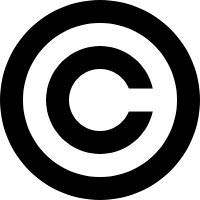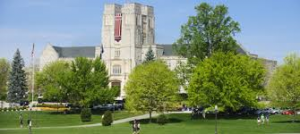What Are Other Institutions Doing on the HR Front?
December 3, 2013
- 62% were moderately concerned or very concerned about faculty members working past traditional retirement age and 53% were moderately concerned or very concerned that their institutions lacked sufficient retirement incentives for faculty, even though (on a scale of 1 to 5, with 1 being strongly disagree and 5 being strongly agree) 63% responded with a score of 3 or higher that their institution offered sufficient phased retirement options for faculty.
- With respect to adjunct faculty, 80% responded with a score of 3 or higher that their institutions fairly compensated their adjunct faculty, while 67% responded with a score of 3 or higher that their institutions provided an “appropriate” benefits package for adjunct faculty (although only 24% indicated that they actually provided health insurance for adjunct faculty). Seventy-five percent responded with a score of 3 or above that their institutions provided appropriate job security and due process protections for adjunct faculty. Interestingly, 48% of the respondents indicated that their institutions were placing or enforcing limits on adjunct faculty hours in order to avoid having to meet the requirements for employer-provided health insurance under the Affordable Care Act.
- With respect to benefits generally available on their campuses, 53% of respondents indicated that telecommuting was permitted, 78% indicated that “family-friendly” work policies were in place; 81% had wellness programs (but only 30% provided financial rewards/benefits for healthy employees); and 77% provide financial support for children of employees to pursue post secondary education. However, the responses indicated that HR professionals thought their institutions could do more: 76% of respondents thought there SHOULD be telecommuting permitted, 94% thought there SHOULD be family friendly policies, 98% thought there SHOULD be wellness programs in place, 82% thought there SHOULD be financial rewards/benefits for healthy employees, and 88% thought there SHOULD be financial support for employees’ children for post secondary programs.
- 50% of respondents indicated that they were paying “more attention” to long term employees with declining job performance.
- 62% indicated that they were paying “more attention” to implementing performance evaluation measures.
- Only 40% indicated that they were paying “more attention” to addressing ADA and similar mandates regarding disabilities.
- 88% of respondents indicated that their institutions had a nondiscrimination policy regarding sexual orientation and 74% had a nondiscrimination policy regarding gender identity.
- Finally, 61% of the respondents responded with a score of 3 or higher that HR is blamed for unpopular changes or reductions in employee benefits and services.


 Many colleges and universities are federal contractors and, as such, need to comply with Department of Labor, Office of Federal Contract Compliance Programs’ (“OFCCP”) regulations relating to affirmative action. Revised Regulations have been issued by OFCCP addressing affirmative action obligations applicable to disabled individuals under the Rehabilitation Act of 1973, as amended ("Section 503"), and to protected veterans pursuant to the Vietnam Era Veterans’ Readjustment Assistance Act of 1974, as amended ("VEVRAA"), and become effective March 24, 2014. Due to the numerous requirements in these new Regulations, higher education institutions that are federal contractors should start reviewing and implementing procedures to ensure compliance. Ten steps that covered institutions should implement by March 24, 2014 include:
Many colleges and universities are federal contractors and, as such, need to comply with Department of Labor, Office of Federal Contract Compliance Programs’ (“OFCCP”) regulations relating to affirmative action. Revised Regulations have been issued by OFCCP addressing affirmative action obligations applicable to disabled individuals under the Rehabilitation Act of 1973, as amended ("Section 503"), and to protected veterans pursuant to the Vietnam Era Veterans’ Readjustment Assistance Act of 1974, as amended ("VEVRAA"), and become effective March 24, 2014. Due to the numerous requirements in these new Regulations, higher education institutions that are federal contractors should start reviewing and implementing procedures to ensure compliance. Ten steps that covered institutions should implement by March 24, 2014 include:
 The recent case of Boyd v. State University of New York at Cortland (2013 WL 5640959 3d Dept. 2013) demonstrates the importance of properly documenting decisions reached during student disciplinary proceedings. This Article 78 proceeding arose out of the dismissal of the petitioner, a student at SUNY Cortland, following a disciplinary hearing where it was determined that petitioner violated the student code of conduct by harassing a student at another institution and violating Delaware law (where the harassed student attended school). Following the disciplinary hearing, SUNY Cortland’s suspension review panel upheld the hearing panel’s decision and sanctions. The petitioner challenged the determination on the grounds that (1) SUNY Cortland failed to follow its published rules in connection with the disciplinary process, alleging that the harassed student’s failure to participate violated SUNY Cortland’s rules because the rules require the “complainant” to present his or her own case, and (2) he was denied due process because he was not provided a detailed statement of the hearing panel’s factual findings. The Court found the petitioner’s first claim unavailing. A “complainant” under SUNY Cortland’s rules is “any person or persons who have filed disciplinary charges against a student.” Here, the fact that the harassed student did not participate was of no consequence, the Court held, because SUNY Cortland filed the disciplinary charges against the petitioner, and thus it (not the harassed student) was the “complainant.” The petitioner was successful on his due process claim. The Court first observed that due process in connection with a public institution’s disciplinary proceeding requires accused students to be provided with a detailed statement of the factual findings and the evidence relied upon in reaching a determination. The Court found that the hearing panel failed in this regard, as its decision contained only a conclusory statement that the petitioner violated the code of conduct and lacked any detail regarding the petitioner’s specific conduct as it related to harassment or violating Delaware law. The Court also found the suspension review panel’s determination deficient because it simply upheld the hearing panel’s “findings” without further discussion. The Court remitted the matter to the hearing panel for preparation of detailed factual findings in support of its determination. This case does not identify at what stage of the disciplinary process detailed findings of fact must be documented (i.e., hearing panel stage, review panel stage, or both), but confirms that this must be done at some stage of the proceedings in order to afford due process to an accused student because this provides a meaningful opportunity for the student to challenge the disciplinary decision. This case should serve to remind public institutions of the need to properly document disciplinary decisions with detailed findings of fact, not only to afford due process, but also with a view more generally towards withstanding potential legal challenge. Although private institutions are not required to extend these same due process protections (e.g., detailed findings of fact) to students as public institutions, this case also provides a reminder to private institutions to ensure that their disciplinary processes are carried out in compliance with published policies and procedures.
The recent case of Boyd v. State University of New York at Cortland (2013 WL 5640959 3d Dept. 2013) demonstrates the importance of properly documenting decisions reached during student disciplinary proceedings. This Article 78 proceeding arose out of the dismissal of the petitioner, a student at SUNY Cortland, following a disciplinary hearing where it was determined that petitioner violated the student code of conduct by harassing a student at another institution and violating Delaware law (where the harassed student attended school). Following the disciplinary hearing, SUNY Cortland’s suspension review panel upheld the hearing panel’s decision and sanctions. The petitioner challenged the determination on the grounds that (1) SUNY Cortland failed to follow its published rules in connection with the disciplinary process, alleging that the harassed student’s failure to participate violated SUNY Cortland’s rules because the rules require the “complainant” to present his or her own case, and (2) he was denied due process because he was not provided a detailed statement of the hearing panel’s factual findings. The Court found the petitioner’s first claim unavailing. A “complainant” under SUNY Cortland’s rules is “any person or persons who have filed disciplinary charges against a student.” Here, the fact that the harassed student did not participate was of no consequence, the Court held, because SUNY Cortland filed the disciplinary charges against the petitioner, and thus it (not the harassed student) was the “complainant.” The petitioner was successful on his due process claim. The Court first observed that due process in connection with a public institution’s disciplinary proceeding requires accused students to be provided with a detailed statement of the factual findings and the evidence relied upon in reaching a determination. The Court found that the hearing panel failed in this regard, as its decision contained only a conclusory statement that the petitioner violated the code of conduct and lacked any detail regarding the petitioner’s specific conduct as it related to harassment or violating Delaware law. The Court also found the suspension review panel’s determination deficient because it simply upheld the hearing panel’s “findings” without further discussion. The Court remitted the matter to the hearing panel for preparation of detailed factual findings in support of its determination. This case does not identify at what stage of the disciplinary process detailed findings of fact must be documented (i.e., hearing panel stage, review panel stage, or both), but confirms that this must be done at some stage of the proceedings in order to afford due process to an accused student because this provides a meaningful opportunity for the student to challenge the disciplinary decision. This case should serve to remind public institutions of the need to properly document disciplinary decisions with detailed findings of fact, not only to afford due process, but also with a view more generally towards withstanding potential legal challenge. Although private institutions are not required to extend these same due process protections (e.g., detailed findings of fact) to students as public institutions, this case also provides a reminder to private institutions to ensure that their disciplinary processes are carried out in compliance with published policies and procedures. The recent experience of Dominican College in New York should serve as a reminder to all institutions of the importance of accurate Clery Act reporting. In 2009, Dominican College was subjected to a U.S. Department of Education program review for the 2006 and 2007 periods. In 2013, the Department of Education finally determined that the College had failed in its Clery Act reporting obligations in several respects, notwithstanding the College’s efforts at correcting those errors upon notification of the deficiencies by the Department. According to the Department’s
The recent experience of Dominican College in New York should serve as a reminder to all institutions of the importance of accurate Clery Act reporting. In 2009, Dominican College was subjected to a U.S. Department of Education program review for the 2006 and 2007 periods. In 2013, the Department of Education finally determined that the College had failed in its Clery Act reporting obligations in several respects, notwithstanding the College’s efforts at correcting those errors upon notification of the deficiencies by the Department. According to the Department’s  In a unanimous decision issued on October 31, 2013, the Virginia Supreme Court, in the case of
In a unanimous decision issued on October 31, 2013, the Virginia Supreme Court, in the case of  At the end of last week, the U. S. Department of Education
At the end of last week, the U. S. Department of Education  Many colleges and universities require applicants to provide information on arrests and convictions as part of the application process. A recent case,
Many colleges and universities require applicants to provide information on arrests and convictions as part of the application process. A recent case,